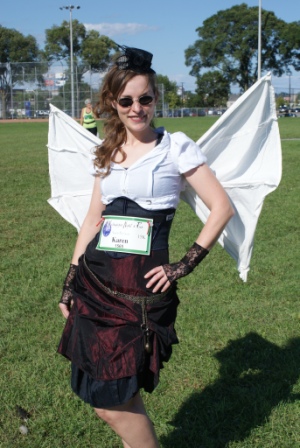iRun the 9 Run Run to say “thank you”
The following is a guest post by Mark White.
Hello iRunNation. My name is Mark White and I am a runner participating in the 9-Run-Run half marathon this year. I have a very personal connection with the 9-Run-Run event this year. I get to say “thank you” to the people I don’t remember but whose impact on my life cannot be overstated.
Let me begin where my memory starts; waking up in a bed with my Mother sitting in a chair beside me, my brothers and Dad talking together next to the bed. It was a strange place, but my family was there, I was very tired, and I fell asleep again. Unknown to me was that they had been there for the last 8 days. I was in the Civic Hospital Trauma Ward. My parents and brothers flew into Ottawa because they heard my name on the radio. “On July 19, 2009, 5 cyclists in Kanata were hospitalized after a hit-and-run with an unknown vehicle on March road.”
Fast forward to September 2010, I sat in a courtroom listening to testimonies from many of the First Responders who were at the scene of the collision. Their accounts were graphic, shocking, and clearly had a residual impact on them. I wanted to say “thank you very much, thank you for all you did and for helping my friends and I survive, when the one responsible drove away and left us there.” I thought of the 9-Run-Run event and vowed to enter it in 2011 and run to honour the men and women who responded to our scene. To my dismay, the trial dates overlapped the 9-Run-Run event in 2011. It was not appropriate for me to have any contact with them at that time.
Not deterred, I aimed for bigger in 2012. I didn’t know how to identify the First Responders who were called, nor how to liaison with the Fire, Police and Paramedics. So, I emailed the Chief of Police and stated my goal and reasons. I wanted to meet the men and women who aided my friends and I when we were severely injured. I wish to simply say “thank you”, shake their hands and show them I have healed enough to run in an event that honours their service, courage, and professionalism.
October 20th is approaching and the hard work of many is coming to fruition.
On Saturday, Oct. 20th, in Stittsville, I get to meet the First Responders (Police, Fire and Paramedic) who came to our aid and are a significant reason why I can continue to run and cycle in this great city.
Many contributors are required to save a life from a devastating injury. Of the orchestra of aid workers; Police, Fire and Paramedics are there first to begin the symphony of healing. To them we say “Play on!” to the percussion of our feet.
______________________________
If you, or someone you know, is Running for a Reason, please send your story to webeditor@irun.ca and we might feature it right here on this blog!




 Our Magazine
Our Magazine Previous Release
Previous Release
